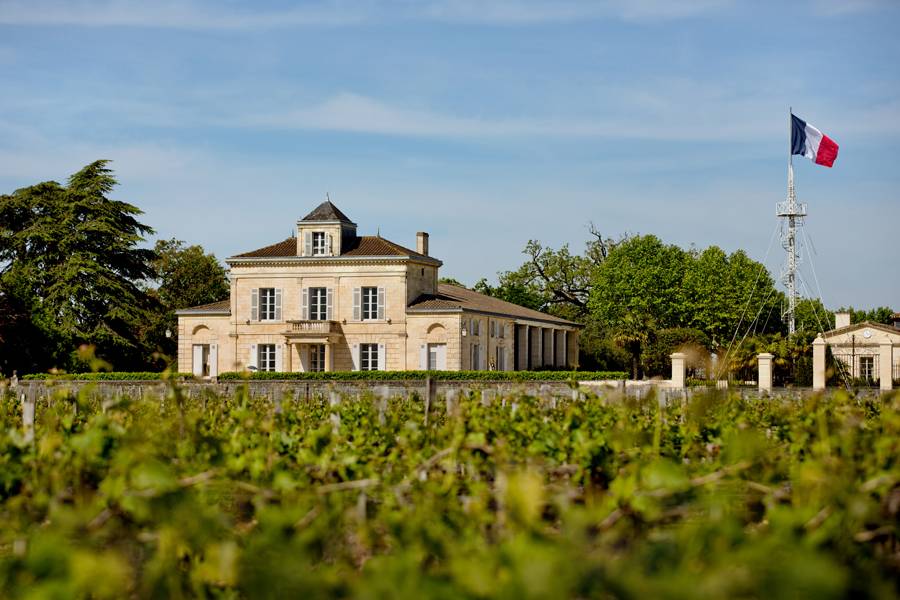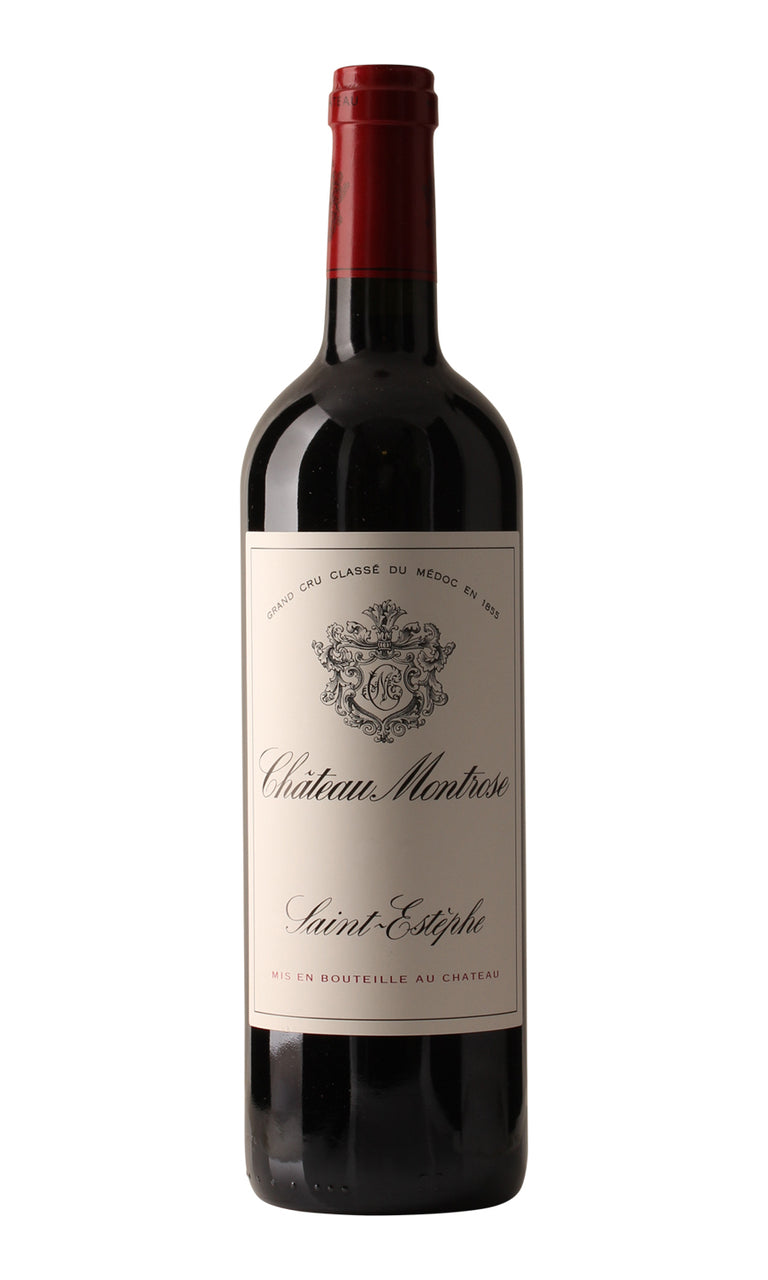- Colour Red
- Producer Château Montrose
- Region St Estèphe
- Drinking 2016 - 2035
- Case size 12x75cl
- Available Now
1995 - Ch Montrose 2ème Cru St Estèphe - 12x75cl
- Colour Red
- Producer Château Montrose
- Region St Estèphe
- Drinking 2016 - 2035
- Case size 12x75cl
- Available Now
Select pricing type
Need help? Call +44 (0)20 7793 7900 or email wine@goedhuiswaddesdon.com.
-
Neal Martin, March 2017, Score: 92
Tasted at the vertical in London, I had never really warmed to the 1995 Montrose despite tasting its many times. However, this bottle seemed closed to Robert Parker's remarks from 2014. It is a blend of 63% Cabernet Sauvignon, 31% Merlot, 5% Cabernet Franc and 1% Petit Verdot that was harvested from 13 to 26 September. The bouquet is less vigorous and more approachable than the 1996 Montrose, initially quite taciturn, but gaining vigor with time and offering blackberry, briary and undergrowth scents, later just a touch of bay leaf and sandalwood. The palate is driven by the higher Merlot content, rendering this a relatively plush and comely Saint Estèphe, well balanced with very good depth, perhaps a Montrose for those with a penchant for headier and opulent styles of wine. Whilst the 1996 has the class and sophistication, the greatest virtue of the 1995 is the most fundamental: enjoyment. Tasted June 2016.
-
Neal Martin, March 2017, Score: 92
Tasted at the vertical in London, I had never really warmed to the 1995 Montrose despite tasting its many times. However, this bottle seemed closed to Robert Parker's remarks from 2014. It is a blend of 63% Cabernet Sauvignon, 31% Merlot, 5% Cabernet Franc and 1% Petit Verdot that was harvested from 13 to 26 September. The bouquet is less vigorous and more approachable than the 1996 Montrose, initially quite taciturn, but gaining vigor with time and offering blackberry, briary and undergrowth scents, later just a touch of bay leaf and sandalwood. The palate is driven by the higher Merlot content, rendering this a relatively plush and comely Saint Estèphe, well balanced with very good depth, perhaps a Montrose for those with a penchant for headier and opulent styles of wine. Whilst the 1996 has the class and sophistication, the greatest virtue of the 1995 is the most fundamental: enjoyment. Tasted June 2016.
-
Robert Parker, April 1996, Score: 88-89
Given Montrose's exceptional performance in 1989, 1990, 1991, and 1994, I was surprised the 1995 did not "ring my chime" on the three occasions I tasted it. I kept wondering whether the wine was simply not showing well during the time I was in Bordeaux, or if I was missing something in Montrose that I was seeing in the vintage's finest wines! Make no mistake about it, it is an excellent wine, but it does not look to be as strong and as successful as the 1994. The wine exhibits a deep ruby/purple color, and an open-knit nose of jammy black fruits with underlying notes of new wood and minerals. Although full-framed and muscular, the wine's slightly flat middle, as well as its lack of the texture and depth found in the 1994, left me wondering if something would emerge with further barrel aging. Certainly the wine will fatten up, but I do not see it as one of the stars of the 1995 vintage. The wine's low acidity and thick, oozing fruitiness suggest it will have, deservedly, many fans. I may have underrated it, but for now I will stick to my position that the 1994 is the superior wine, and that the 1995, while excellent, may not be outstanding. It promises to drink well young and last for 15+ years. Wines such as this can often appear to be somewhat disjointed when very young (how well I remember the 1982 Pichon-Lalande), but take on more precision with age. I look forward to retasting Montrose later this year. All of the wines in this segment were tasted between March 19 and March 28 in Bordeaux. Most of the important wines from both the 1994 and 1995 vintages were tasted three separate times during my ten-day stay in Bordeaux. Drink: 1996-2011.
-
Robert Parker, January 1998, Score: 91
This wine has fleshed out, displaying a more defined, concentrated style than when I tasted it in March, 1996. Will it eclipse the highly successful 1994? The 1995 offers an opaque purple color, followed by aromas of black raspberries, blueberries, and cassis. The wine is medium to full-bodied, with moderate tannin, exceptional ripeness, low acidity, and a chewy expansiveness. It will begin to shed its tannin in 5-6 years, and will keep for two decades. Last tasted 1/97. Drink: 2002-2020.
-
Robert Parker, February 1997, Score: 90-92
Montrose has been one of Bordeaux's most consistently successful chateaux since 1989. This wine has fleshed out, displaying a more defined, concentrated style than when I tasted it in March, 1996. Will it eclipse the highly successful 1994? The 1995 offers an opaque purple color, followed by aromas of black-raspberries, blueberries, and cassis. The wine is medium to full-bodied, with moderate tannin, exceptional ripeness, low acidity, and a chewy expansiveness. It will begin to shed its tannin in 5-6 years, and will keep for two decades. Drink: 2002-2017.
Producer
Château Montrose
For years Montrose has been in the shadow of its more decadent, flashy neighbour, Cos d'Estournel.Quietly confident, it is a brilliant performer in notably dry, sunny vintages due to its dense clay soil that allows the vines to remain hydrated. In 2003, this was particularly true as many deemed it wine of the vintage. They have a new director, Jean-Bernard Delmas, a legend amongst the Bordelais having run Haut Brion and La ...Read more
For years Montrose has been in the shadow of its more decadent, flashy neighbour, Cos d'Estournel.Quietly confident, it is a brilliant performer in notably dry, sunny vintages due to its dense clay soil that allows the vines to remain hydrated. In 2003, this was particularly true as many deemed it wine of the vintage. They have a new director, Jean-Bernard Delmas, a legend amongst the Bordelais having run Haut Brion and La Mission Haut Brion for 40 years, so quality is only likley to get better and better.Read less

Region
St Estèphe
St Estèphe is the most northern of Médoc communal crus. Its unique terroir is made up of layers of gravel which are supported by a dense clay base. This subsoil retains water in dry seasons and works particularly well with Merlot, a largely planted variety which is used to flesh out Cabernet Sauvignon. This clay base also creates powerful, textured tannins which enable St Estèphe to stand out from the pack. Like St Julien, it is one of the four most important communal appellations of the Médoc which does not contain any first growths, despite its southern border being a stone'sthrow from Château Lafite. Nonetheless, it is home to some excellent châteaux making fine wines such as Cos d'Estournel, Montrose, Calon Ségur and Lafon Rochet.




